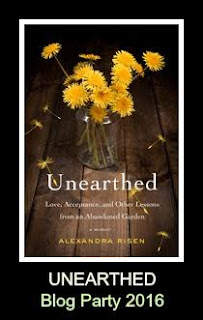This sponsored post is written by me in conjunction with the The Book Club Cookbook
launch of their new food blogger party feature. All opinions are my own.
launch of their new food blogger party feature. All opinions are my own.
There is a new food blogger party feature on bookclubcookbook.com and I'm excited to be part of the inaugural event. The first title Unearthed: Love, Acceptance, and Other Lessons from an Abandoned Garden by Alexandra Risen. You can check out the #UnearthedParty: here
Read my thoughts on the book in my previous #UnearthedParty post: Momiji Tempura. And stay tuned for a third post that will include a giveaway for the book. Risen's book has been an incredible inspiration for me to forage plants. At the bottom of this post, there are some good practices
for foraging; keep these in mind if you're sourcing your ingredients in the
wild.
Evergreen Tisane
slightly adapted from Evergreen Tisane by Foraged Love
Quick note on the terminology here. This is a 'tisane' because - technically - if the brew doesn't include leaves from the tea bush (Camellia sinensis), it's not tea. It's a tisane.
I had originally planned to make this while we were camping in the Eastern Sierras last week, but I was in vacation mode and didn't get around to it. We were too busy, hiking, swimming, and enjoying the scenery. Here we are at the tip of Emerald Bay with the Desolation Wilderness in the background.
Thankfully we have plenty of pines here at home. So, I was able to send the boys up the hill to pick some needles for the tisane.
Ingredients makes 3 servings
- 1/2 to 1 C fresh spruce or pine needles (my Kitchen Elves clipped some pine needles for me)
- 3 C water
- honey to taste (I used 1 T per serving)
Procedure
Collect the needles, choosing the greenest and freshest.
Sort out brown or dry needles, measure half a cup to 1 cup. Rinse well.
Chop into smaller pieces.
Sort out brown or dry needles, measure half a cup to 1 cup. Rinse well.
Chop into smaller pieces.
Bring 3 cups of water to a boil in a medium pot. Add needles, remove from heat , and let steep for 20 minutes. Needles will sink to bottom of pot.
Strain, reheat, and add honey to sweeten.
Find Houghton Mifflin Harcourt here...
Foraging Guidelines
- Avoid areas where you know pesticides are used. Be careful of major roadsides, industrial areas, or areas where heavy chemical use may occur.
- If you are prone to allergies, be careful. Have appropriate medical supplies with you.
- You may want to test plants by rubbing on your skin before picking. If in doubt, don’t pick at all.
- Learn to identify plants. Before handling any plants and using them in the recipes and crafts in this book, consult a reputable guide for safely identifying plants.
- Respect endangered species in your area. It is illegal to pick them.
- Pick only what you need, and protect the roots of plants.
- If you are washing leaves, add a teaspoonful of white vinegar or lemon juice to a large bowl and let them soak a few minutes before rinsing. Pat dry with paper towels.
- Some plant parts are edible, some are not. Sometimes the season affects what part of a plant is edible.
- Some plants are poisonous. There are also some look-alike plants. It is important to be aware of these.
Find Houghton Mifflin Harcourt here...
Find Alexandra Risen
*Disclosure: I did receive a complimentary, advance reading copy of Unearthed: Love, Acceptance, and Other Lessons from an Abandoned Garden by Alexandra Risen for my participation in the #UnearthedParty as well as an opportunity to give a copy away. Opinions are my own. I received no further compensation for this post.










This book was right up your alley Cam with all the foraging ideas.
ReplyDelete